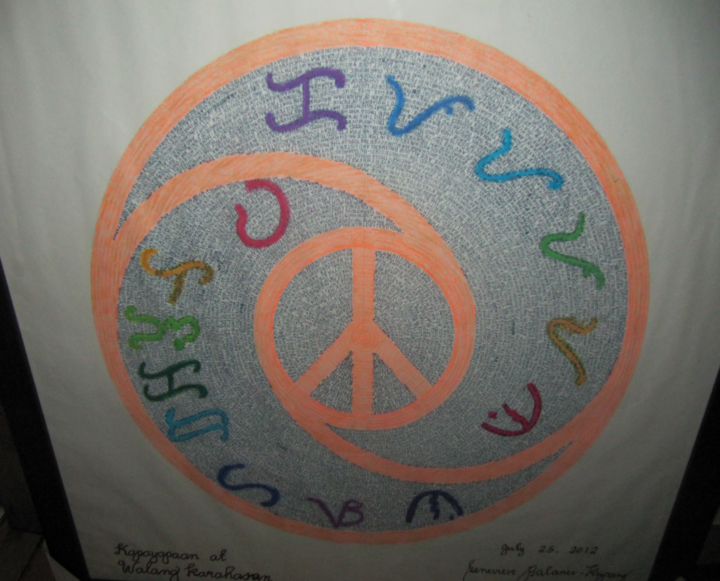SPIRITUALITY
by Genevieve Balance-Kupang
From the Byakko Shinko Kai (BSK) perspective, written mandalas of bright words and gratitude to nature are a path to inner peace and world peace. The mandala is a circle with a center around which bright, positive, important, and meaningful words are placed. As one writes words of love, gratitude, peace, harmony, and beauty, the power of those words is poured into the mandala paper, mandala cloth, or other mandala media. And as peaceful, positive thoughts and prayers are written in a circular way on a piece of paper with concentric circles, one becomes attuned to the truth being imprinted while the power of the intention is poured into it.
It is believed that the process of writing the words heals and revitalizes the writer and the universe. Using colored pens in writing and designing unique patterns, beautiful artistic mandalas are created. Completed works of mandalas continuously send forth wonderful energy to humanity and to the universe. Just like the rising confidence of other “cultural creatives” (Ray & Anderson, 2000), co-creating with the Divine in multi-diverse endeavors and other art forms like the mandala the application of the mind, body, spirit, work, play, earth approach towards wholeness sustainability and inclusiveness are strengthened.
Personally, I have created mandalas that not only tell my own evolving story, but about creation itself in a narrative experience telling its own story across the eons of the evolutionary unfolding of each mandala; you see pictures of mandalas in gratitude to the awesome universe in general, the solar systems, Mother earth and the millions of species that are dependent on her sustenance. I realized later when I was already at the Asian Social Institute that all my mandalas reflected the tenets of creation spirituality.

Mandala of Infinite Gratitude to Water & Ocean Animals
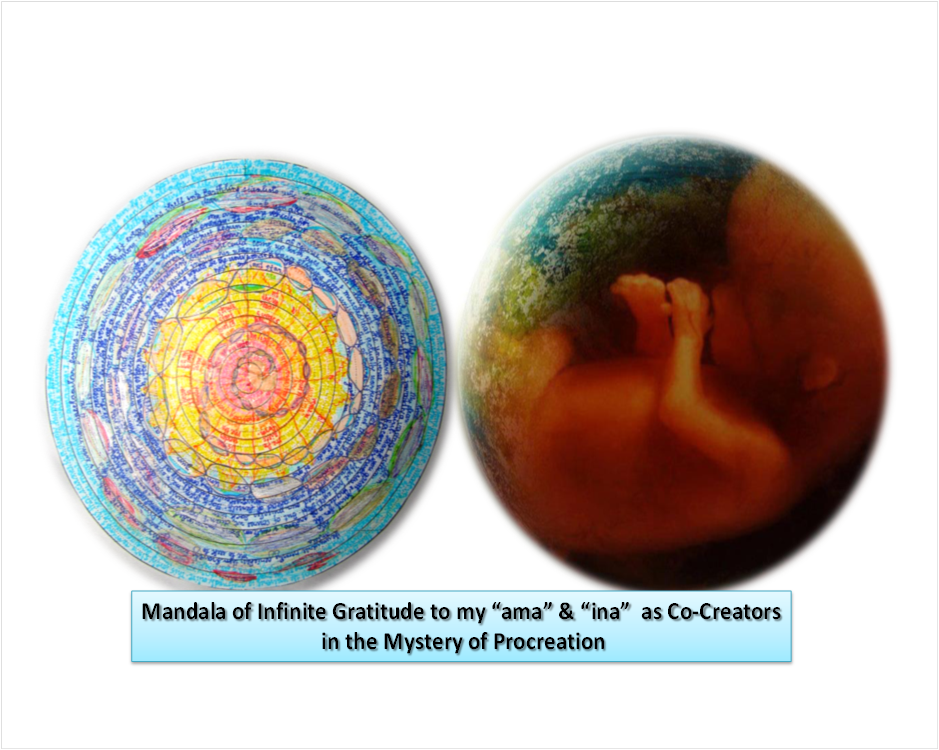
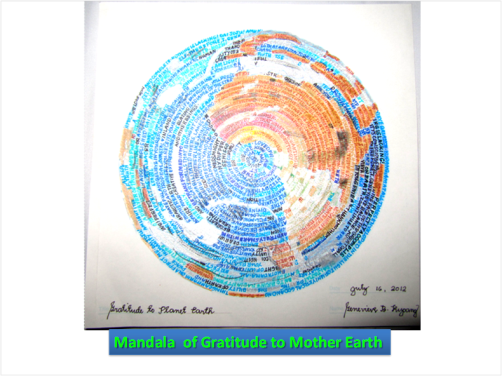
Being the educator that I am, I integrated mandala writing in my teaching and encourage my students and other participants of the mandala workshops to focus on all or one of the following: human life-giving endeavors, the evolutionary self, the four elements of life–water, earth, wind, and fire, the most important substances in the universe; I agree with Cunningham, B. (2002) when he posits that “awareness of the mandala may have the potential of changing how we see ourselves, our planet, and perhaps even our own life purposes.”
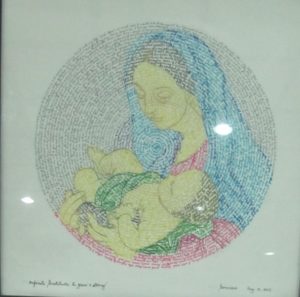
Mandala of Infinite Gratitude to Mother Mary
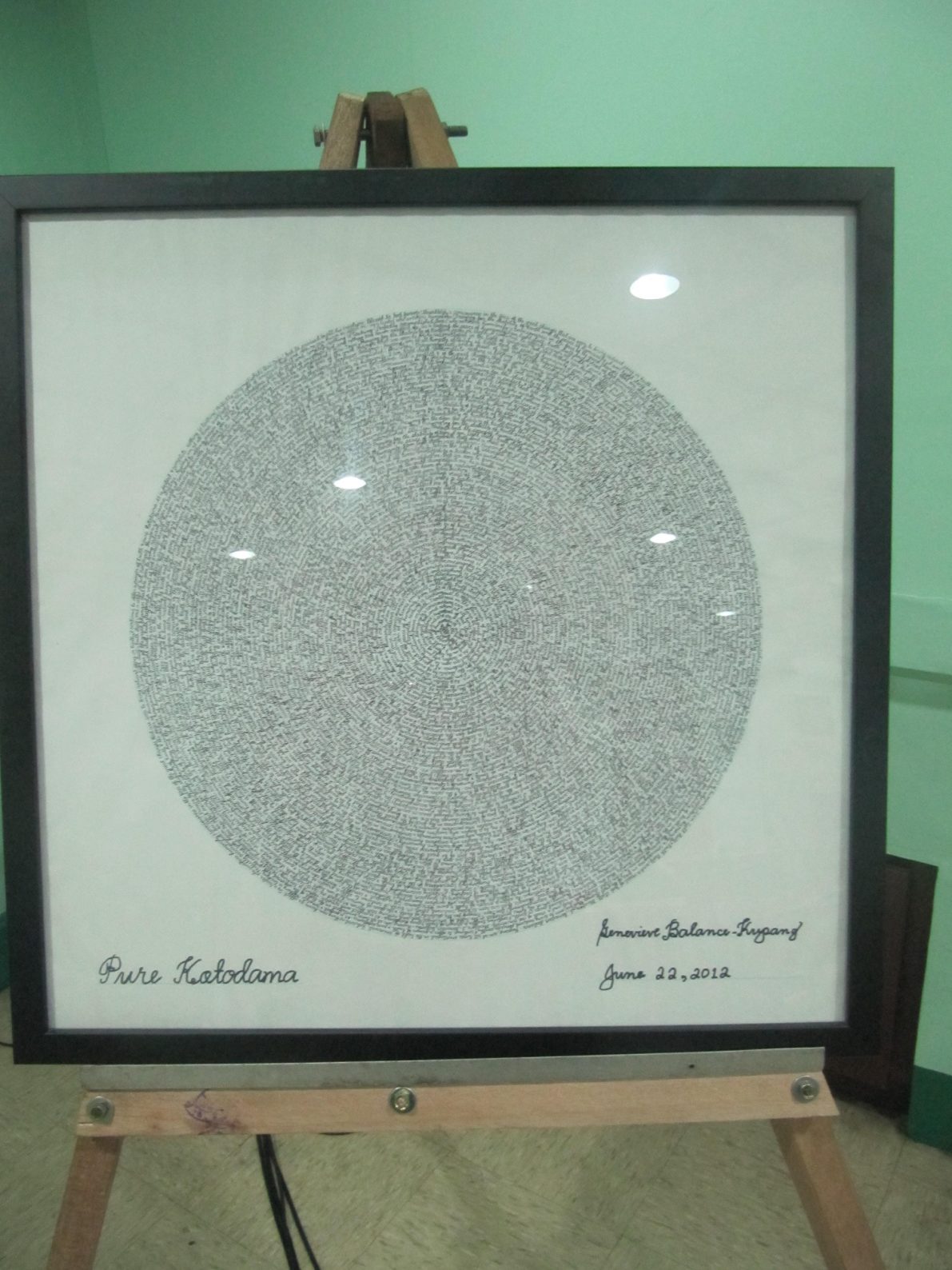
Mandala of Pure Kotodama Pure Land Enlightened Minds
Since I am a person with a shadow side to my personality, I acknowledge it and transcend it through positive thoughts, words, actions, and being with nature, I share in her groaning and struggle for the final evolutionary liberation. It is one of the many approaches to enhance spirituality that enable me to find my feet in the diversity and chaos of our age.
My sharing about mandala usually commences with a profound gratitude and worship to the Supreme Artist of the Mystery of Life. Our breathing in of the Mystery alive in us and breathing out as sacred vessels connects us with life and the Ultimate Source realizing the blessed mystery of God unbounded in the Cosmos. Usually, mandala “heartists” create mandalas while breathing in constant thanksgiving to our Creator God; we acknowledge our interconnection with all of humanity and other beings in creation, recognizing our kinship with them all. We recognize that all come from the same strand of that Mystery. That is why a part of us is perturbed, numbed, alarmed, dies…whenever we see alienation, desecration, desertification, discrimination, fragmentation, killings, and other forms of violence done to others and other beings. The list is endless.
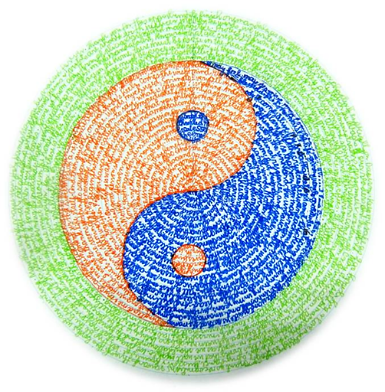
Mandala of Yin and Yang
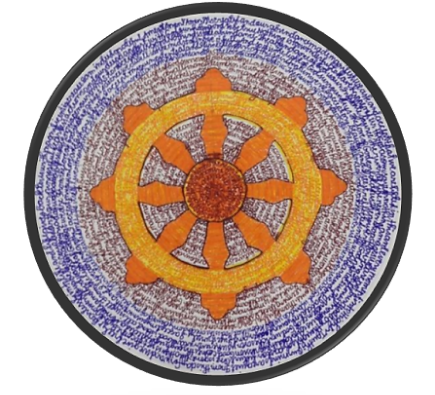
Mandala of dharmachakra or wheel of dharma
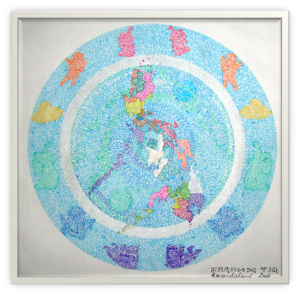
Mandala for the safety and well- being of the Philippines
The above in reality do affect us; undeniably, we are bombarded with signals of distress. These stir within us feelings of fear, anger, and sorrow for the personal self and collective consciousness. There is recognition of a real threat to the survival of our own and other species, to the legacy of our ancestors, to unborn generations, and to the living body of Earth. By virtue of our humanity, we share these deep responses. Macy & Brown (1998) state that “to be conscious in our world today is to be aware of vast suffering and unprecedented peril.”
As creative human beings, we are endowed with Divine quintessence as change agents to recover our true shining selves towards spiritual transformation; to empty our false selves and be instruments of Justice, Peace and Integrity of Creation; to heal and revitalize our world and enrich the quality of our lives and evolve ourselves towards wholeness and integrity. Mandala making is but one of the many approaches to enhance spirituality and being that enable us to find our feet in the diversity and chaos of our age.
This endeavor of sharing my research on the phenomenon of mandala surfaced from my personal experience of creating and facilitating mandala workshops to schools, with our partners in the Justice, Peace, and Integrity of Creation (JPIC) movement as well as my yearning to share and validate the experience through the experiences of my co-researchers.
This article reflected only my selected personal accounts of experiences from participating in rituals often in circular formations to creating cosmic mandalas and facilitating others to create their own. I explored the significance and philosophy behind the mandala based on the personal experiences of my co-researchers who are themselves creators and facilitators of mandala.
The limitations of the article are that it focused on experiences that are unique to the individuals and to their setting which may not always yield a generalization for the larger population; mandala is a very personal journey, an intimate encounter with the Self. It is a spirit-led experience, and no two mandala experiences are the same. It is often a way of accessing the individual unconscious. Like dreams, it is can be figurative, personal, metaphorical, or vivid.
About the writer:
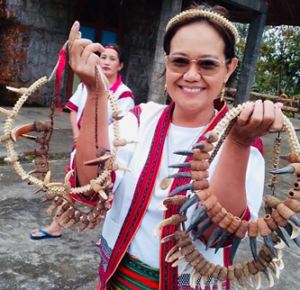 Genevieve Balance Kupang (Genie) is an anthropologist, consultant, researcher, and advisor to individuals and organizations engaged in working for good governance, genuine leadership, justice, integrity of creation, peace, the indigenous peoples, preservation of cultures, and societal transformation processes. She is a peace educator, author, an interreligious dialogue practitioner, and resource person with a career in the academe and NGO.
Genevieve Balance Kupang (Genie) is an anthropologist, consultant, researcher, and advisor to individuals and organizations engaged in working for good governance, genuine leadership, justice, integrity of creation, peace, the indigenous peoples, preservation of cultures, and societal transformation processes. She is a peace educator, author, an interreligious dialogue practitioner, and resource person with a career in the academe and NGO.


